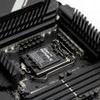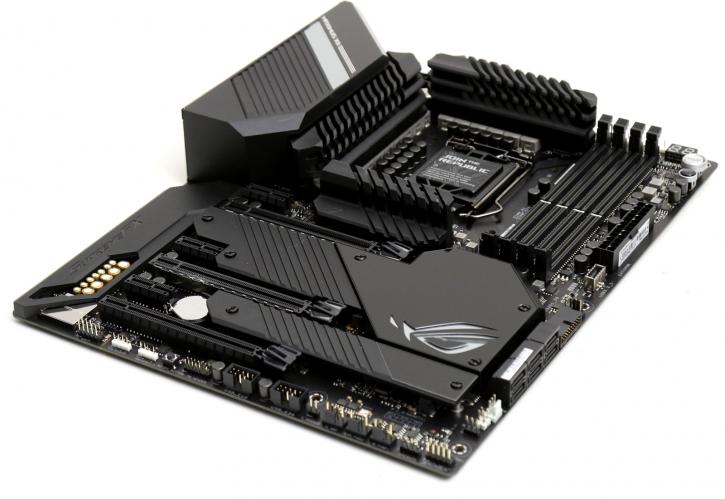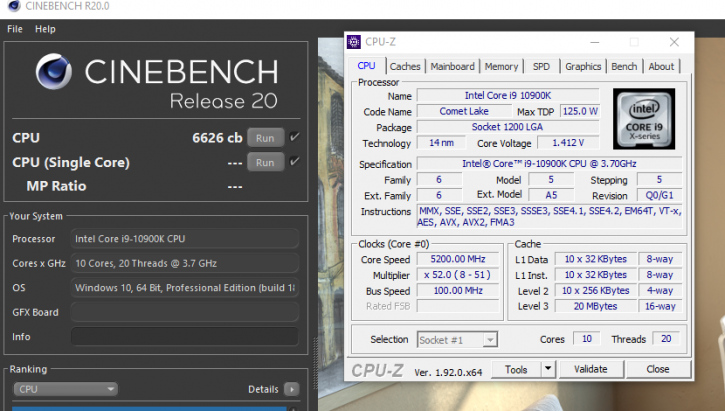Final Words & Conclusion
Conclusion
ASUS needed to differentiate its product line a bit on features. Coming from the extreme that means lacking the TB3 card, 5 opposed to 10 Gbps LAN, the DIMM.2 slot for one extra M2 SSD, and then a whopping 4700 MHz DD4 max frequency opposed to supported 4800 for the extreme model. That's most of the primary differences I can think of really. Differences I certainly can live with as the price level for the HERO will be much more attractive (I didn't say cheap here) compared to the extreme model. Choices choices. Performance-wise it's all the same really, so the bigger part of the conclusion between the two shares the same elements.
Whenever we write a motherboard review, for the conclusion we need to make a distinction between the CPU and motherboard in the conclusion of course. Everybody will have an opinion about Comet Lake, but for motherboards, you need to be more factual about platform performance and features. Coming from Z390, Z490 really isn't that different in terms of the infrastructure in combo with Comet lake generation processors. The big miss for this hybrid symbiosis of CPU and motherboard is the lack of PCI Express 4.0 support running through the veins of the hardware eco system., and that's a bit of a miss on the intel side. The interesting thing is that Z490 range of motherboards factually is PCIe Gen 4.0 compatible, just not with this processor, here you will need the next-gen Rocket Lake-S series processors. So the 11th generation Core processors will double up on PCI bandwidth, opening up a plethora of options in terms of M2 storage and graphics cards. The reality is also this, do you really need PCIe Gen 4.0 in 2020? We honestly doubt it. A good PCIe Gen 3 M2 SSD is super fast, and for graphics cards, the Gen 3 or Gen 4 link just doesn't matter. In the past with Crossfire and SLI PCIe Generations made a difference, but even today if you go SLI, all data is now passed over the graphics cars though a high-bandwidth interface, internally bridged on the graphics cards. So yes, it matters less. So what's the big difference between Z390 and Z490 then? Well, nothing much on the chipset side really. Yes, the motherboards get a bump to AX WIFI and more refined Ethernet jacks. Also, the VRM has been beefed up, but that's a necessity for Comet Lake-S high-end processors really. However, making a move from Coffee lake (Gen9) towards Comet lake (Gen10) is not going to move mountains in terms of features and performance. ASUS is well aware of that and as such started adding more and more to this Maximum XII Extreme motherboards by adding niche Ethernet configurations and AX WIFI. The rest, however, is a small step upwards in terms of USB 3.2, and it's better optimized on the VRM area to deal with the new 6, 8, and 10-core processors. The new Extreme ran absolutely gorgeous, we had no weird stability issues and the performance was spot on where it needs to be. What I like most, however, are the refined new aesthetics. The PCB is clean, everything is dark and the new heatsinks work out really well as well as looking really nice. The platform (Z490/Comet Lake-S) also manages heat and power consumption at higher, but decent enough levels.
Power consumption
With these ten cores and twenty threads proc you get a 125 Watt TDP processor. With the system at idle with a GeForce RTX 2080 Ti installed / 16 GB memory / SSD and the Z490 motherboard, I hovered at roughly 60~65 Watts in IDLE. That's okay, the load values are okay as well but definitely higher. When we stressed the processor 100% run we reach roughly 200~250 Watts with the flagship 10-core part. That's the entire system. That is on the high side alright. Then again, does anyone actually care about it when you get performance metrics like shown today?
DDR4 Memory
For Comet Lake-S (as well as 8th, 9th, and now 10th Gen Intel procs) and DDR4 we always say, volume matters more than frequency. A 3200 CL16 to 3600 CL18 MHz kit is plenty fast overall for all your needs. Higher frequency memory is more expensive and does offer better bandwidth but the performance increase in real-world usage will be hard to find. Unless you transcode videos over the processor a lot. As always, my advice would be to go with lower clocked DDR4 memory with decent timings, but get more of it. Don't go for 8 GB, get two or four DIMMs, and in total a minimum of 16 GB. we think the current sweet spot is 3200 MHz (CL14/CL16) or 3600 MHz CL16/CL18).
Performance & tweaking
Once tweaked we noticed that the 10 cores like a bit of extra voltage, we expect all-core tweaks in the 5.1~5.2 GHz marker to need 1.35~1.45 Volts on our used processor. While that does increase power consumption, it wasn't something that scared me away. Some platforms will and procs will also be able to manage a lower voltage.
If you plan a tweak at that 5.2 GHz marker then remember my remarks on cooling, you will need LCS, that or a very good heatpipe cooler. Again, we have been using an ES sample so I cannot say anything conclusive on the final retail products (these might run a tiny bit cooler). The infrastructure that Z490 offers is easy to use, you increase the CPU voltage and multiplier and you are good to go. Another plus for the Intel platform is that over the years they have been able to refine their memory controllers, pop in anything XMP 2.0 and you have a 90% chance it'll work straight out of the box with very fast memories.
Final words
I think I summed up the most important aspects of the hero versus Extreme in the first paragraph already. The differences for most of us are trivial at best, and if you can agree with that then the HERO is the far better alternative to purchase based on the price level, albeit not cheap as anything with a ROG logo smacked onto it has that effect. It's good and optimized hardware though that appeals to a rather specific demographics of even our end-user and reader base. By design, the ROG Maximum XII HERO is pretty on the eyes, as trivial as it sounds, in the year 2020 that is a relevant thing.
I'll state it again, going from Z390 to Z490 is not going to bring you massive differences platform wise other than a new series processor. We doubt that the upgrade from Coffee lake to Comet lake is worth this kind of money really. Platform wise you'll get some added features like AX Wifi (optional) and a that 5G Ethernet configuration. The VRM design has been beefed up a notch to match the Comet Lake-S power states, and overall it's just a proper board. Connectivity-wise in terms of your PCIe slots for your graphics subsystem you are looking at a full x16 Gen 3 lanes for one graphics card. While the platform is PCIe Gen 4.0 ready the reality remains that Z490 will only survive two generation s of processors, so Rocket Lake-S is the next series that will finally bring PCIe Gen 4.0 We expect Comet Lake-S processors from the high-end range to be able to manage the 5.1 GHz domain on all cores with exceptions running up towards 5.3 GHz (all-core). I base this metric on super high-end air coolers or proper liquid cooling (LCS). From there onwards you are looking at proc ASIC quality and cooling being the more important denominator. Overall a really recommended board as it ticks most of the right boxes. At 399 USD / 449 EUR the cost of ownership for a ROG board anno 2020, however, is getting hugely hefty.
Handy related downloads:
- Sign up to receive a notification when we publish a new article
- Or go back to Guru3D's front page




